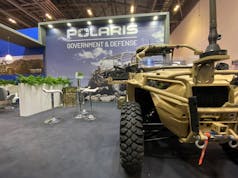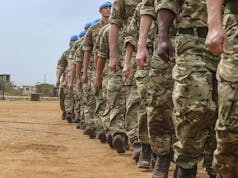Exercise Trident Juncture will test the NATO Response Force and will involve the Royal Navy, Army and Royal Air Force.
Exercise Trident Juncture 2015 will be held through October and November, predominantly in, over and on the seas around Portugal, Spain and Italy. It is one of a series of long-planned exercises to ensure that NATO Allies are ready to deal with any emerging crisis.
The UK and other participating NATO allies will commit 230 military units, 140 aircraft and more than 60 ships to the exercise, drawing in a total of around 36,000 international troops.
One of the key aims of Trident Juncture is to test the Very High Readiness Joint Task Force ahead of it becoming fully operational.
The history of the task force dates to 2014 during the Wales NATO summit where leaders agreed to establish a Very High Readiness Joint Task Force. The VJTF is expected to be able to deploy at short notice to threats against NATO sovereignty. It will consist of a land brigade numbering around 5,000 troops, supported by air, sea and special forces. The VJTF would be supported by two more land brigades as a “rapid reinforcement capability” in case of a major crisis. Altogether, the enhanced NATO Response Force will amount to around 30,000 troops.
Amphibious ship HMS Bulwark and HMS Ocean are currently en route to take part in the exercise.
Defence Secretary Michael Fallon said:
“In a darker and more dangerous world, it is vital that we work with our NATO partners so we can respond to any threat.
That’s why the UK will be right there at the heart of Exercise Trident Juncture – contributing nearly 3,000 troops, our two largest warships and our Typhoon fighter jets.
The exercise will help preparations for NATO’s new rapid reaction taskforce, which the UK will provide troops for every year into the next decade and which we will lead in 2017.”
Vice Admiral Ian Corder, the UK’s Military representative to NATO and the EU, said:
“Trident Juncture is the biggest and most ambitious NATO exercise in more than a decade, focussed on exercising crisis response, collective defence, and helping to shape the future adaptation and posture of the Alliance.
It will demonstrate the Alliance’s capability, readiness, and ability to address whatever threats it may face, now and in the future.
I am delighted the UK personnel will be playing such a major part in this key undertaking alongside our allies and partners. It will be a clear demonstration of the UK’s unwavering commitment to NATO solidarity and security.”
The UK will commit around 2,800 personnel to Trident Juncture, including an Army Brigade Headquarters and Battlegroup, three Royal Navy warships, Typhoon fighter jets and helicopters.






Apparently, the only boat we could supply was the tea-boat!